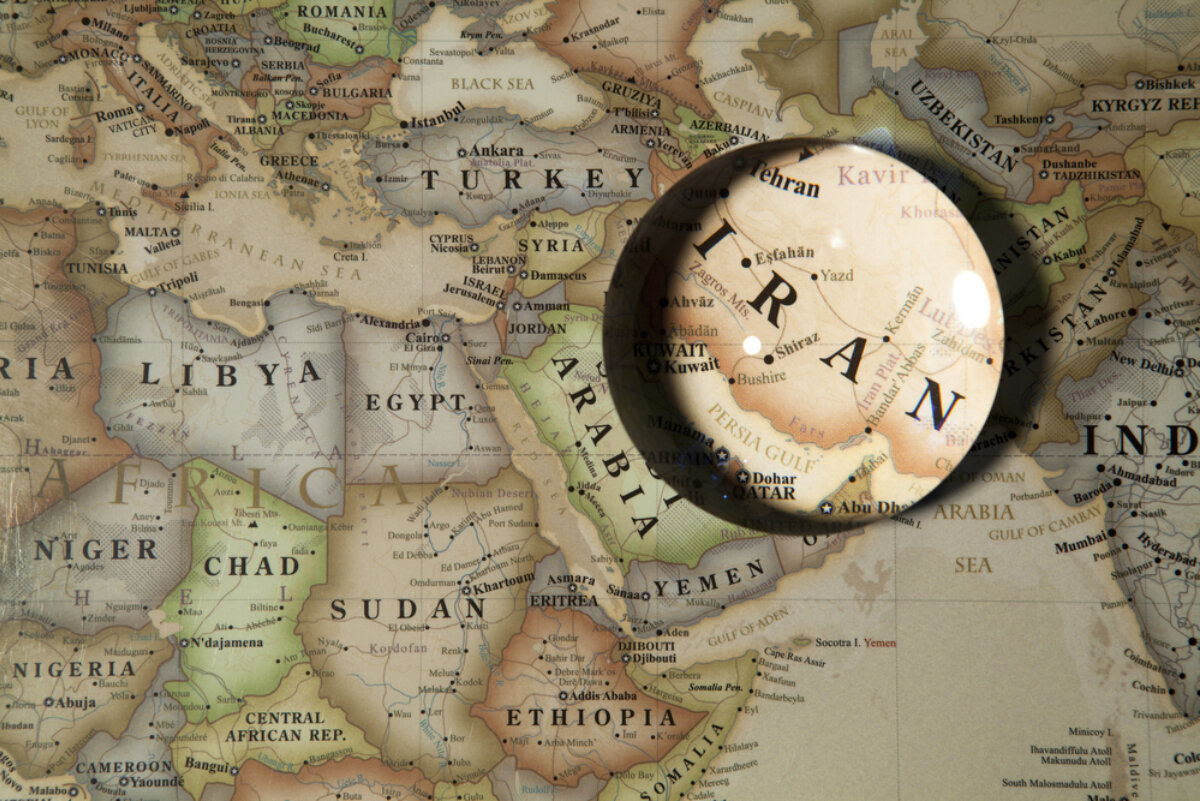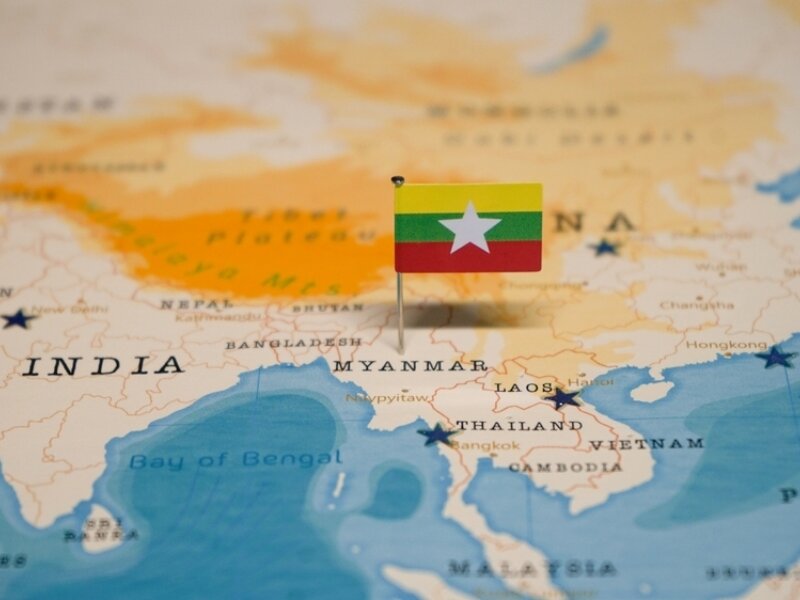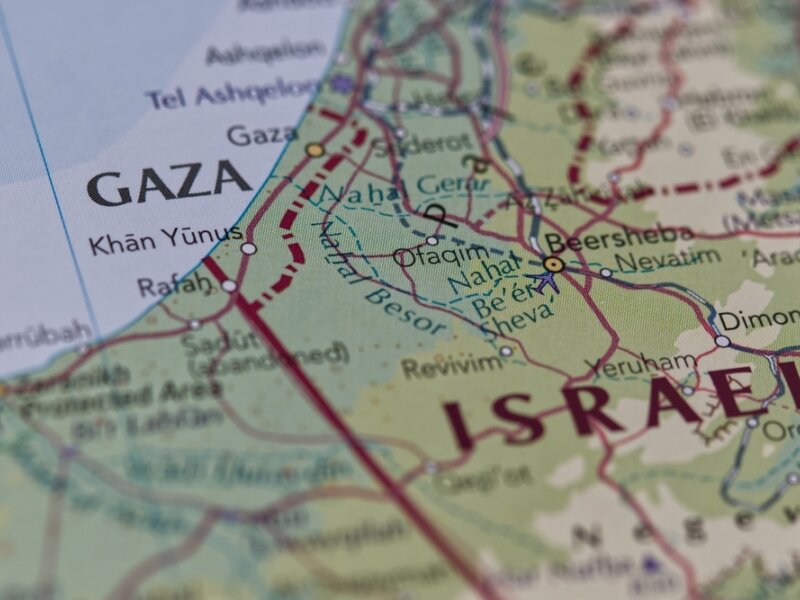The Iranian perspective on the Gaza conflict and the role of the “Axis of Resistance”
The conflict in Gaza could lead to a redefinition of regional balances. Iran seems to benefit in the short term, but the Axis of Resistance emerges as the main loser. An analysis by Giorgia Perletta

When, on 7 October, Hamas armed groups launched the military operation “Al Aqsa Flood”, entering deep into Israeli territory and taking the intelligence services by surprise, international attention turned to Iran. Indeed, Hamas surprising capacity for armed incursion into Israeli territories led many to believe that the Islamic Republic had a direct role in the operation. This is partly attributable to the fact that Iran has for years provided military training and funding to the Islamic Resistance Movement, the most recent member of the “Axis of Resistance” (Mehvar-e moqavvamat). Moreover, in the months leading up to the attack, there were more frequent cross-meetings between the leaders of the Islamic Revolution Guards, Hamas and Hezbollah. After a few weeks, however, Supreme Leader Ali Khamenei declared that Iran would not intervene in the conflict between Israel and Hamas because it had not been informed in advance of the attack by its ally. This statement not only highlights the asymmetrical imbalances within the “Axis of Resistance”, but also defines the Islamic Republic’s position in the context of today’s conflict.
The Axis of Resistance is an Iranian-led network of state (including Iran and Syria) and non-state actors, namely Iraqi pro-Iranian Shia militias, the Yemeni Houthis, Lebanese Hezbollah, Hamas and Islamic Jihad. It is an alliance of autonomous groups, which have their own independence and local agendas, but are united by the same goal: namely the resistance to the State of Israel and Western interference. The term “Axis of Resistance” originated as a rhetorical device in 2002, following the famous speech made by then US President George W. Bush on the “Axis of Evil”, i.e. those ‘rogue’ countries including Iran, Iraq and North Korea, which are considered supporters of international terrorism. In reality, the matrix of ‘resistance’ has characterized the Islamic Republic’s foreign and regional posture since its inception in 1979 and, in this case, it was the resistance to imperialism and foreign interference. The concept of moqavvamat is not only a strong rhetorical and propagandistic element used extensively in the speeches of the Iranian élite to affirm the pivotal principles of the republic, but it is also instrumental in forging alliances where Iran can exert a leadership role, i.e. in non-state contexts and among militias. Thanks mainly to the Niru-ye Quds, the Jerusalem Forces – a group of the Islamic Revolutionary Guards employed in extra-territorial operations – Iran has been able to penetrate different regional contexts, from Lebanon already in the 1980s, to post-Saddam Iraq, to the Syrian and Yemeni conflicts. These different realities provided the operational field for the formation and evolution of the Axis, but also the context in which to increase combat and coordination capabilities. The Quds Forces have provided military training, logistics, ammunition, and intelligence operations to the Axis components, achieving a degree of strategic coordination aimed – in theory – at collective defense and common security.
What the conflict between Hamas and Israel is demonstrating, however, is the internal fragility of the Axis, the imbalance between the parties, and the asymmetries between its components. Neither the Islamic Republic nor Hezbollah have intervened directly to defend their ally. Neither are willing to engage in a direct confrontation with Israel or want to risk the escalation of the conflict into a regional dimension. This position reveals, indeed, the weakness of the Axis as an actor capable of pursuing a policy of collective defense and, at the same time, shows how Iranian national interest – the leading country of the coalition – always prevails over declared ideological interests. Resistance to Israel is part of a long-term project to be realized through means of deterrence, without ever reaching direct confrontation. Indisputably, Iran is interested in keeping Israel occupied on the war front, and in ensuring that Hamas continues to pose an existential threat to Tel Aviv. But the defense of Hamas, as well as the Palestinian issue in general, is not worth the stability of the Islamic Republic, nor of long-standing Iranian allies like Hezbollah, who would have no obvious gain from a conflict on a regional scale, nor from a direct military operation against Israel. Iran uses the Axis of Resistance to ensure strategic depth but is not inclined to risk its national stability to defend individual components of the alliance. This reveals all the limitations and fragilities of the Axis – a coalition within which various national interests and local agendas prevail to the detriment of the collective defense project, that originally laid down its founding principles.
In any case, the conflict in Gaza, as it is unfolding, could bring several advantages to the Islamic Republic. While meetings continue between the Iranian and Saudi delegations to corroborate the process of diplomatic détente announced last March, the ongoing war has bogged down the normalization’s attempts between Israel and Saudi Arabia. Going along the lines of the Abraham Accords of 2020, normalization between Tel Aviv and Riyadh would have been a threat to the security of the Islamic Republic, but also a reason for Tehran’s greater regional isolation. Secondly, Iran aspires to regional de-securitization and reduction of tensions, while at the same time seeking to consolidate its role as a key player. The current conflict could give Iran greater weight in regional forums. A recent example was the summit held on 11 November in Riyadh, which brought together the Arab League and the Organization of Islamic Cooperation, comprising 57 members, including Iran. During the summit, which focused on discussing a ceasefire in the war between Israel and Hamas, Iranian President Ebrahim Raisi made his first official visit to Saudi Arabia and urged all countries to sever political and trade ties with Israel, and to designate the Israeli military as a terrorist organization. This stance reveals Iran’s ambition not only to isolate Israel, but above all to obstruct the normalization process between Israel and the Arab states.
In conclusion, the conflict in Gaza will inevitably lead to a redefinition of regional balances. Although Iran seems to benefit from it at least in the short term, the Axis of Resistance emerges as the main loser, as it has failed to respond cohesively and provide the collective defense and shared security for which it was created.



